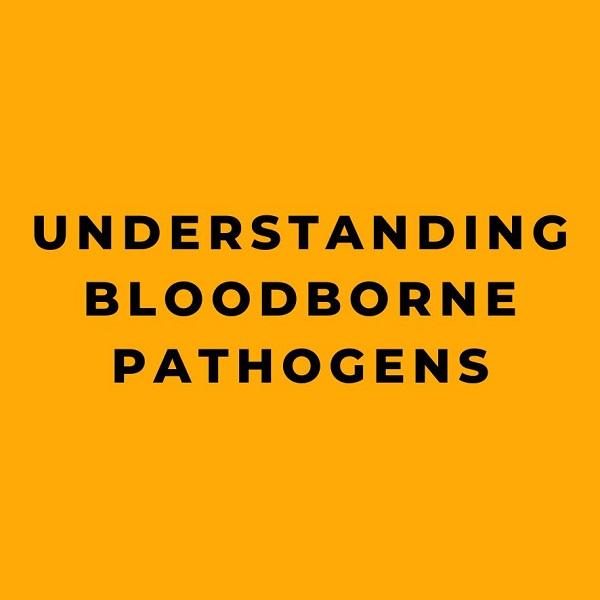Bloodborne Pathogens (BBP) is a topic that is often viewed with fear and trepidation, but in reality, it is crucial to understand and manage it effectively. BBPs are microorganisms present in human blood that can cause infectious diseases. They are easily transmittable and can lead to serious health issues. However, with proper training and precautions, the risks associated with BBP can be significantly minimized. In this comprehensive guide, we will delve into the essential aspects of understanding Bloodborne Pathogens, including their nature, transmission, prevention, and best practices for handling potential exposure.
What are Bloodborne Pathogens?
Bloodborne pathogens are microorganisms such as viruses or bacteria that are carried in blood and can cause disease in humans. These pathogens include but are not limited to Human Immunodeficiency Virus (HIV), Hepatitis B Virus (HBV), and Hepatitis C Virus (HCV). These pathogens can also be found in other body fluids such as semen, vaginal secretions, cerebrospinal fluid, and saliva, especially if they are visibly contaminated with blood.
The most common modes of transmission for BBPs include accidental cuts with contaminated sharp materials, contact between mucous membranes or broken skin and infected body fluids, sharing of needles, and sexual contact. Additionally, BBPs can be spread from mother to child during childbirth and can be transmitted through absorption via the eye or mucous membranes from an infectious person to a non-infectious person.
It is important to note that the most common bloodborne infection worldwide is Hepatitis C, also known as Hep C. Therefore, understanding and effectively managing the risks associated with BBPs is of utmost importance for everyone, whether in the workplace or in emergency response situations.
Preventing Transmission of Bloodborne Pathogens
Preventing the transmission of Bloodborne Pathogens is a critical aspect of healthcare and safety protocols. Various measures can be taken to minimize the risk of exposure to BBPs:
1. Universal Precautions: Implementing universal precautions, which involve treating all blood and certain body fluids as if they are infectious, is essential in preventing the transmission of BBPs. This includes the use of Personal Protective Equipment (PPE) such as gloves, gowns, masks, and eye protection when there is a potential for exposure to blood or other infectious materials.
2. Safe Handling of Sharps: Proper disposal of contaminated sharps and the use of safety-engineered devices to minimize the risk of needle-stick injuries are crucial in preventing the transmission of BBPs.
3. Education and Training: Comprehensive training programs on BBP prevention and handling should be provided to healthcare workers, first responders, and other individuals who may come into contact with blood and body fluids in their line of work.
4. Post-Exposure Prophylaxis (PEP): In the event of potential exposure to BBPs, timely and appropriate post-exposure prophylaxis should be administered to minimize the risk of infection.
Understanding the modes of transmission and implementing preventive measures is essential in minimizing the risk of exposure to BBPs and protecting the health and safety of individuals.
Handling Bloodborne Pathogens in the Workplace
In a healthcare setting, as well as in other occupations where there is a potential for exposure to blood and body fluids, it is imperative to have clear protocols and procedures for handling BBPs. Employers are responsible for implementing and maintaining a comprehensive Bloodborne Pathogens exposure control plan, which includes but is not limited to:
– Providing appropriate training and education on BBP prevention and handling for all staff members
– Offering access to necessary Personal Protective Equipment (PPE)
– Implementing safe work practices and engineering controls to minimize the risk of exposure
– Ensuring proper disposal of contaminated sharps and infectious waste
– Providing access to post-exposure evaluation and follow-up as per the OSHA Bloodborne Pathogens Standard 29 CFR Part 1910.1030.
Employees, on the other hand, are responsible for adhering to the established protocols, using PPE as directed, and reporting any potential exposures or incidents promptly. By fostering a culture of safety and awareness, workplaces can mitigate the risks associated with BBPs and ensure the well-being of their employees.
Training and Certification for Bloodborne Pathogens
Education and training are pivotal in ensuring that individuals are equipped with the knowledge and skills to handle BBPs effectively. Online training programs and certifications provide a convenient and comprehensive way for individuals to learn about Bloodborne Pathogens, universal precautions, and best practices for prevention. These programs cover essential topics such as the modes of transmission, proper use of PPE, and the steps to take in the event of exposure to BBPs.
Additionally, obtaining certification in Bloodborne Pathogens demonstrates a commitment to safety and proficiency in handling potential risks in both professional and personal settings. It also serves as a valuable credential for healthcare professionals, first responders, and individuals in various occupational fields where exposure to BBPs is a concern.
Conclusion
Understanding Bloodborne Pathogens is essential for safeguarding the health and safety of individuals in various settings, including healthcare, emergency response, and occupational environments. By comprehensively addressing the nature of BBPs, modes of transmission, preventive measures, and the importance of proper training, individuals can effectively mitigate the risks associated with potential exposure to BBPs. Employers and organizations play a crucial role in implementing and maintaining robust exposure control plans, while individuals are responsible for adhering to safety protocols and seeking necessary training and certification. By prioritizing education, prevention, and proactive measures, the impact of Bloodborne Pathogens can be minimized, ensuring a safer and healthier working environment for all.










